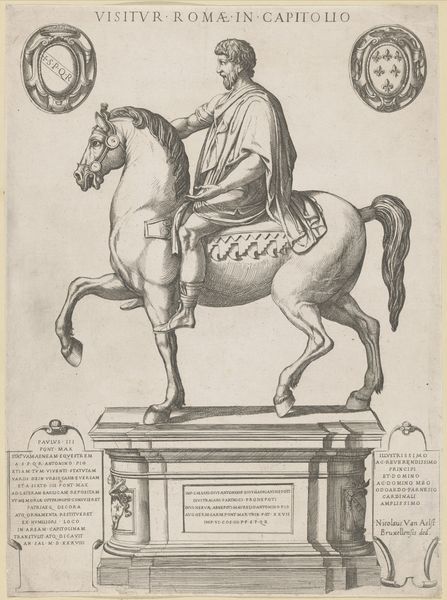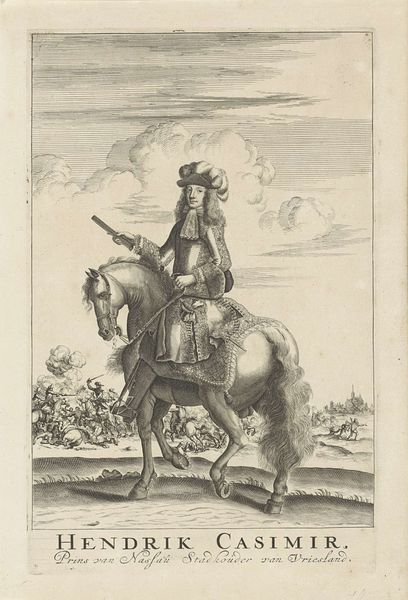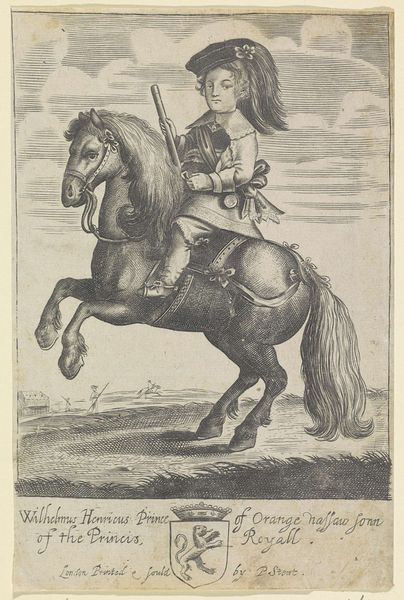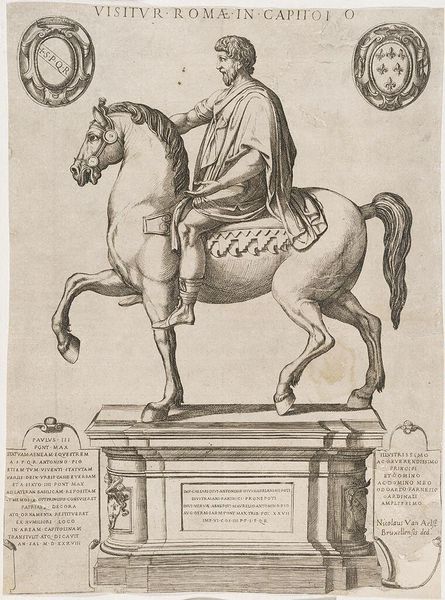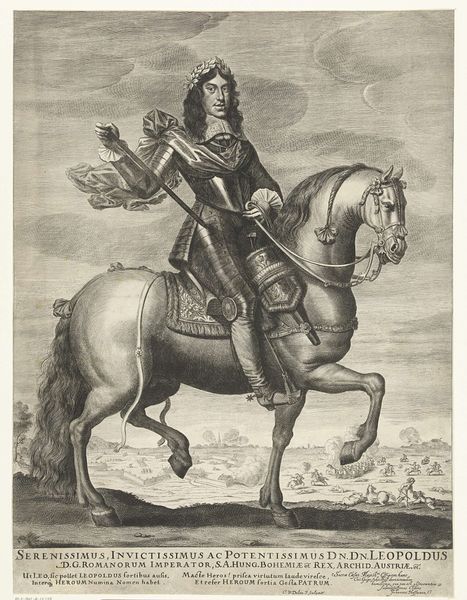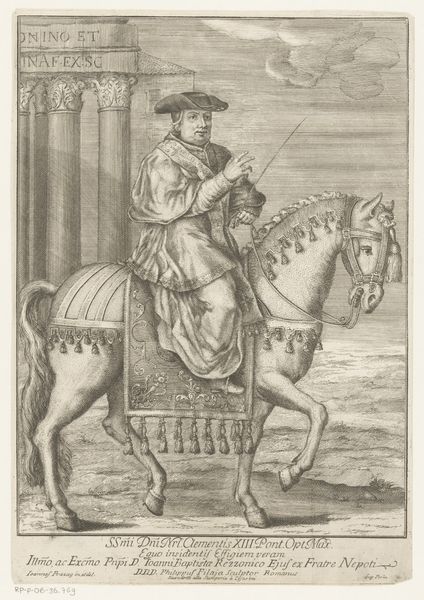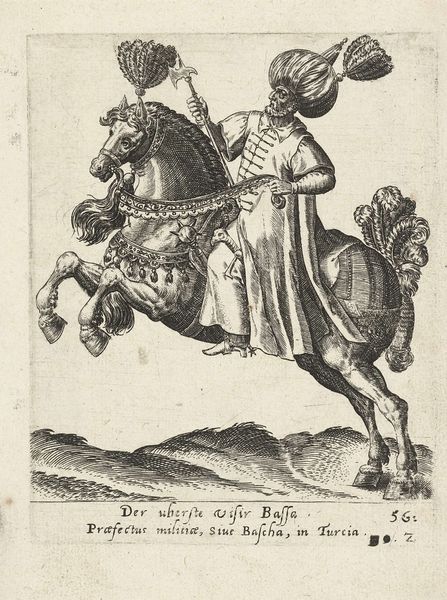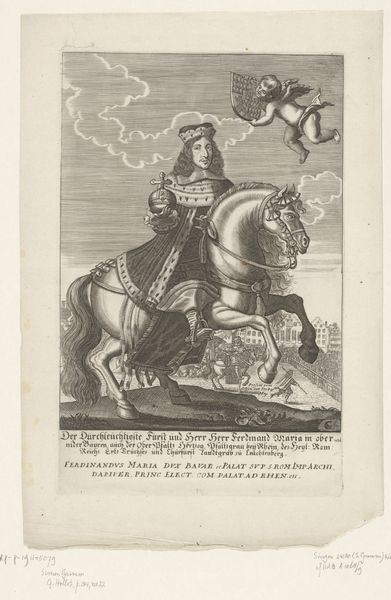
Dimensions: height 297 mm, width 192 mm
Copyright: Rijks Museum: Open Domain
This engraving of Anna of Hanover on horseback was made by C.P. Maj. Equestrian portraits of rulers had, by this time, become a well-worn visual trope in European art. Consider how this image, produced in 1744, uses conventions of the genre to project authority. We might think about the country of its origin, and how the conventions of that culture, its historical events, its class structure and political movements, might have influenced its imagery. Anna of Hanover was daughter of George II and married to Prince William IV of Orange, so this portrait announces a dynastic alliance. The act of commissioning and circulating such prints helped to reinforce such alliances. To fully appreciate the work, we need to examine its historical context, using resources like letters, diaries, and account books to explore how art was made, displayed, and interpreted in its own time.
Comments
No comments
Be the first to comment and join the conversation on the ultimate creative platform.
